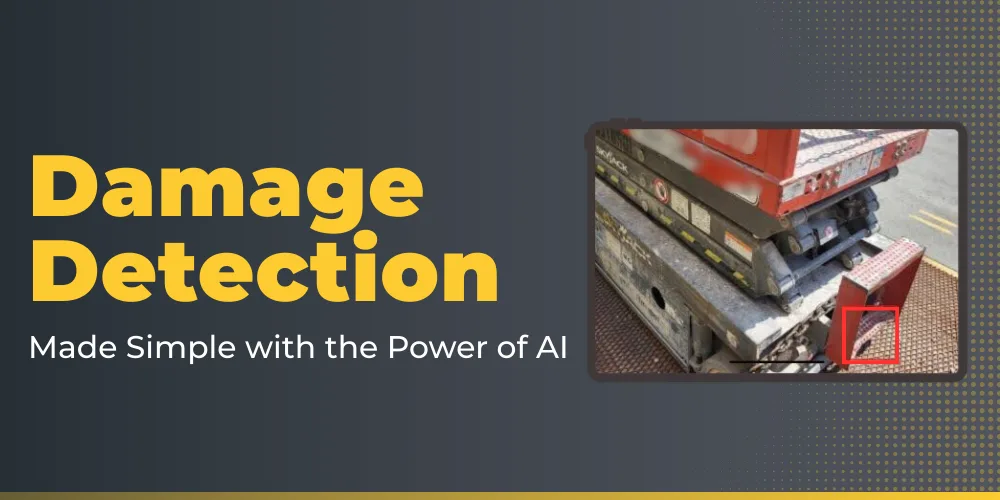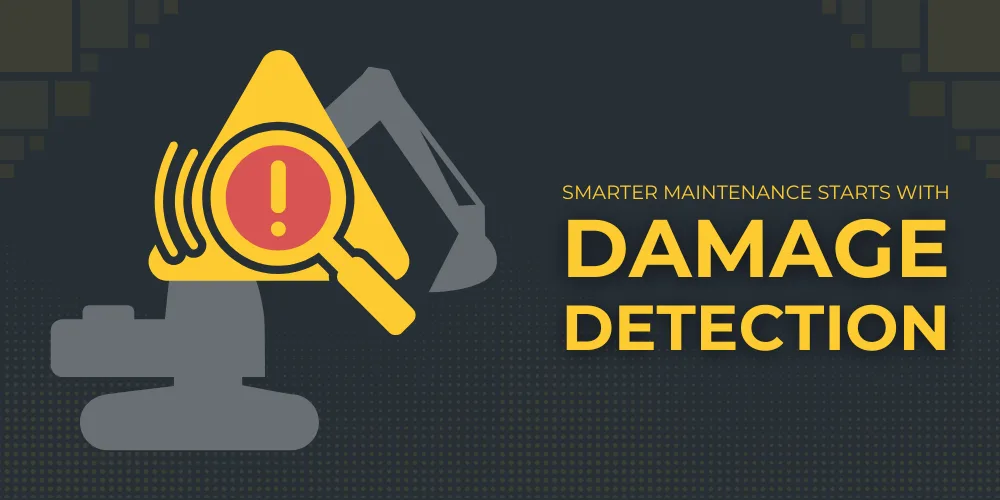In an era where digital operations are entwined with day-to-day business transactions, businesses are finding themselves exposed to the growing threat of cybercrime, such as sophisticated phishing attacks, relentless ransomware, and other malicious cyber activities. With cybercriminals increasingly targeting the equipment rental sector, it is crucial to understand the common threats and the havoc they can wreak on operations, reputation, and the bottom line.
The potential impact of these attacks can range from crippling downtime, financial losses, to severe data breaches—compromising both company and client information. Recent incidents and alarming statistics in the industry underscore the urgent need for robust cybersecurity best practices to protect your business and sustain the trust of your clientele.
Cybercrime is not just a concern for large technology companies anymore. It has become so profitable for the perpetrators that even individuals and small businesses have become the targets. In 2020, 43% of breaches were suffered by small businesses. The direct impact can be devastating. Unfortunately, it can also be accompanied by major fines and penalties.
Even a minor breach with no direct financial impact can cause significant reputational damage and make it difficult for businesses to regain lost customer trust. Forty-four percent of breaches included personally identifiable information, and the breaches studied contained between 2,000 and 101,000 records.
This introduction sets the stage for an in-depth exploration of actionable cybersecurity strategies tailored for the equipment rental industry.
What Are Some of the Biggest Vulnerabilities?
Sometimes, we don’t like to admit it, but a huge vulnerability is people, our staff, and the people we work with. For example, now that we need a passcode for everything, it has become convenient to use the same one across various sites. As a result, this can lead to credentials being compromised much more easily.
Another example is that hackers are becoming more sophisticated in producing convincing yet malicious emails (phishing/spear phishing). Also, fake websites for unsuspecting staff to click on are much harder to distinguish today. Recent research from Proofpoint revealed that 75% of organizations worldwide experienced a phishing attack in 2020, and 74% of attacks targeting US businesses were successful4.
Another consideration to be aware of is bots, which are commonly used by threat actors. They can automatically scour the internet for sites and servers with known, unpatched operating system vulnerabilities. Thankfully, these vulnerabilities are widely known, and such attacks can easily be prevented by keeping your software updated to the latest version.
What should rental companies do to protect themselves against cybercrime?
While the topic is unique to every organization, some good baselines to follow are:
- Train your staff on how to keep themselves and your business secure. Untrained staff can be more damaging than unpatched applications.
- Partner with vendors who will assist you in protecting your security. Cybersecurity is a profession, and internal IT teams may lack the expertise to secure your business.
- Verify your internal and external IT teams are well-versed in cybersecurity.
- Ensure multi-factor authentication is enabled on any application that supports it.
- Ensure all of your software is updated with a robust patching policy.
- Enforce using a password manager for your staff so all sites and applications have unique, complex passwords.
Finally, backup everything. As online collaboration/email software becomes more common, don’t get caught in the mindset that “it’s on the cloud, it’s safe.” Ensure you have those services backed up.
Who should be responsible for cybersecurity in your company?
Cybersecurity is everybody’s responsibility. While larger companies must nominate a responsible person, the best practice is to have every person responsible for anything they interact with. Build an environment where all team members share any cybersecurity news or software vulnerabilities if there is a knowledge gap, especially for smaller, family-owned rental companies, and partner with an IT service provider with cybersecurity expertise. Larger companies should consider partnering with a dedicated Security Incident and Event Monitoring (SIEM) service and a Security Operations Centre (SOC).
Pro Tip: Implement a comprehensive cybersecurity training program for all staff members, emphasizing the importance of unique, complex passwords managed through a password manager, regular software updates, and vigilant email and online practices to prevent phishing and other cyber threats.
Strong Authentication and Access Control Measures
Implementing robust authentication and access control measures in the equipment rental industry is paramount to safeguard against unauthorized access and potential cyber threats. Businesses can better protect their digital assets and customer information by strengthening these areas.
Authentication Methods
Advanced authentication methods ensure only authorized individuals can access sensitive systems and data. Two-factor authentication (2FA) adds an extra layer of security by requiring users to provide two forms of identification before gaining access.
It can include something they know (like a password), something they have (like a smartphone, token, or ID card), or something they are (utilizing biometrics). Biometric systems, which might utilize fingerprints, facial recognition, or retina scans, offer sophisticated ways of verifying identities with reduced risk of exploitation.
Access Control Policies
Formulating and enforcing strict access control policies is also critical. The principle of least privilege ensures that users are granted the minimum levels of access—or permissions—needed to perform their jobs.
Role-based access control (RBAC) also helps manage user access according to their role within the organization, further streamlining the process and improving security. Access should always be tailored to an individual’s position and responsibilities, preventing the overextension of access rights.
Importance of Regular Audits
Regular user access and permissions audits are instrumental in maintaining an effective security posture. Periodic reviews help identify improper access rights and redundant user accounts and ensure that staff roles or employment status changes are reflected in their access privileges. Implementing routine checks is key for early detection of potential vulnerabilities and swiftly rectifying any issues that could lead to security breaches.
In conclusion, the equipment rental industry must adopt strong authentication and access control measures as a cornerstone of its cybersecurity best practices. It guarantees a fortified defense against unauthorized access and helps it focus on the security of customer data and internal systems amidst an ever-evolving threat landscape.
Pro Tip: Secure your systems with two-factor authentication (2FA), biometric verification, and strict access controls like least privilege and role-based access. Regularly audit user permissions to quickly identify and fix vulnerabilities, ensuring robust protection against unauthorized access and cyber threats.
Network Security and Firewall Implementation in the Equipment Rental Industry
Cybersecurity best practices are essential in the equipment rental industry to protect sensitive data and maintain customer trust. Network security becomes paramount as the industry increasingly relies on networked systems to manage inventories, transactions, and communication. A well-implemented defense strategy can differentiate between a secure network and a costly data breach.
Importance of Securing the Network Against Intrusions
Securing network infrastructure is critical in deterring potential intrusions that can lead to loss or compromise of valuable data. As every device on the network can be a potential entry point for attackers, comprehensive measures must be in place to prevent unauthorized access and safeguard business continuity.
Best Practices for Firewall Deployment and Maintenance
- Choose enterprise-grade firewalls tailored to the specific needs of your network environment.
- Regularly update firewall firmware to patch vulnerabilities and enhance functionality.
- Implement restrictive rule sets by default, only allowing necessary traffic to pass through.
- Conduct periodic reviews and audits of firewall rules to ensure they continue to meet security requirements.
- Create clear documentation of firewall policies and procedures for consistent implementation and maintenance.
Discuss Network Monitoring and Intrusion Detection Systems
Deploying network monitoring and intrusion detection systems (IDS) provides another layer of protection. These systems constantly analyze network traffic for signs of suspicious activity, offering real-time alerts that enable a rapid response to potential threats.
An effective IDS should be coupled with regular network analysis to identify patterns that could indicate a security issue. Staff should be trained to recognize and respond to the alerts generated by these systems, ensuring a swift and adequate response to any type of security incident.
Regular Cybersecurity Assessments and Audits
To withstand the evolving threats in the digital age, the equipment rental industry must embrace regular cybersecurity assessments and audits as a core aspect of its security strategy. These assessments involve meticulously reviewing an organization’s security infrastructure, ensuring all systems are resilient against potential cyber-attacks.
The Process and Benefits of Regular Cybersecurity Assessments
Regular cybersecurity assessments translate to a proactive approach to identifying and mitigating vulnerabilities before they can be exploited. The process typically includes:
- Scanning for vulnerabilities within the network and systems.
- Assessing existing security policies and procedures.
- Evaluating employee awareness and adherence to security practices.
- Reviewing physical security controls.
These steps pinpoint weaknesses and demonstrate due diligence in safeguarding customer data and company assets, enhancing trust, and preserving reputation.
Fortifying Business Security with Audited Controls
Audited controls are not just a regulatory requirement but a strategic enabler. By regularly auditing security controls, businesses in the equipment rental sector can ensure that their security measures are up-to-date and effective. Auditing provides insights into the robustness of security policies and offers a roadmap for continuous improvement of the security posture.
The Role of Third-Party Audits in Unbiased Security Analysis
Third-party security audits offer an unbiased perspective, which is crucial for the credibility of the assessment process. External auditors can spot security gaps that internal teams may overlook, as they bring fresh eyes and updated knowledge of the latest cyber threats and mitigation strategies. Engaging with third-party auditors also conveys a commitment to transparency and excellence in cybersecurity, which can positively affect customer relationships and business partnerships.
Pro Tip: Regularly audit cybersecurity measures and engage third-party auditors for unbiased insights. It ensures robust protection against cyber threats and enhances trust with customers and partners.
Fortify Your Defenses: Incident Response Planning in the Equipment Rental Industry
Cybersecurity best practices are incomplete without an effective Incident Response Planning and Business Continuity strategy. As threats continuously evolve, preparing for a cyberattack is just as crucial as preventing one.
The equipment rental industry’s unique reliance on digital systems for inventory, booking, and customer data requires it to prioritize these aspects to maintain trust and operational stability.
The Critical Role of an Incident Response Plan
A robust incident response plan is the safety net that can catch a business when a cyber threat materializes. It ensures that teams know how to react swiftly and efficiently to mitigate the impact of an incident. Without it, the business may suffer from prolonged downtime, financial losses, customer distrust, and irreparable brand damage.
Key Elements of an Effective Response Plan
- Preparation: Staff training and role assignment to ensure everyone knows their responsibilities before a crisis occurs.
- Detection and Analysis: Tools and processes to promptly identify and evaluate the incident’s nature.
- Containment: Short-term and long-term containment strategies to limit the spread of the threat and prevent further damage.
- Eradication: Removing the threat from the affected systems entirely to prevent recurrence.
- Recovery: Methods to restore systems and data to full functionality while verifying the security of those systems.
- Post-Incident Activity: Reviewing and documenting the incident to improve the response plan and prepare for future threats.
Strategies for Ensuring Business Continuity Post-Incident
The ultimate goal of any incident response plan is to maintain or quickly resume business operations. Best practices for business continuity involve:
- Creating redundancies for critical systems and data backups to facilitate recovery.
- Establishing alternative communication channels in case primary ones are compromised.
- Developing a comprehensive disaster recovery plan that covers a variety of potential incidents.
- Conducting regular drills and simulations ensures that the response strategy is effective and that all team members know their roles.
Embracing these cybersecurity best practices will strengthen the resilience of companies in the equipment rental industry, empowering them to handle unforeseen challenges and sustain operations under adverse circumstances. The core objective is to protect the technology and data that power their businesses and safeguard their reputation and long-term success.
Optimizing Vendor and Third-Party Risk Management in the Equipment Rental Industry
The equipment rental industry’s increasing reliance on third-party vendors and service providers amplifies the potential cybersecurity risks businesses face. Effectively managing these risks is crucial for safeguarding sensitive data and maintaining client trust.
Risks Associated with Third-Party Vendors and Service Providers
Integrating third-party services into your business operations can introduce vulnerabilities if these parties do not adhere to robust cybersecurity practices. Potential risks include data breaches, malware infections, and other security incidents stemming from inadequate systems and process protections.
Best Practices for Assessing and Managing Third-Party Risks
- Rigorous Vetting: Conduct thorough security assessments of potential vendors to understand their cybersecurity posture before engagement.
- Continuous Monitoring: Establish a system for ongoing evaluation of third-party security measures to ensure they comply with evolving threats.
- Clear Contracts: Define specific security requirements and responsibilities within contractual agreements to maintain a high cybersecurity standard.
Steps to Ensure Vendors Adhere to the Business’s Cybersecurity Standards
To ensure that external parties uphold your cybersecurity criteria, it is vital to:
- Conduct Security Audits: Regular audits can help identify and rectify security gaps in third-party operations.
- Provide Training Resources: Offer guidance and support to help vendors understand and implement necessary security protocols.
- Set up Incident Response Protocols: Establish clear procedures for vendors to follow in the event of a security incident, including timely reporting and collaboration for effective resolution.
Secure Payment Processing Systems
The integrity of payment transactions is paramount in the equipment rental industry. As financial transactions are a core aspect of daily operations, ensuring the security of these processes is vital to prevent financial fraud and maintain customer trust. Secure payment processing systems are not merely a convenience but an essential barrier against the ever-present risk of cyber threats.
The Importance of Secure Payment Processing
Each transaction presents an opportunity for malicious entities to intercept sensitive financial information. Failure to protect this data can lead to devastating financial losses for the business and its clients and significantly damage a company’s reputation. Therefore, integrating robust payment security measures is a key component of cybersecurity best practices in the equipment rental industry.
Best Practices for Secure Payment Processing
- End-to-end encryption: Encrypt all transaction data from the point of sale to the processing network to prevent unauthorized access.
- Secure online gateways: Use payment gateways that comply with the latest security protocols and provide secure transaction environments.
- Regular security updates: Maintain up-to-date payment software to protect against the latest security vulnerabilities and threats.
- Multi-factor authentication: Implement multi-factor authentication for payment processing to verify the identity of each user accessing the system.
- Employee training: Train staff on secure payment handling procedures and protecting customer payment information.
Compliance with PCI DSS
Adhering to the Payment Card Industry Data Security Standard (PCI DSS) is t a necessity. Compliance with PCI DSS ensures that all entities involved in payment processing adhere to guidelines designed to secure credit and debit card transactions against data theft and fraud. It encompasses a comprehensive set of requirements, including network architecture, data encryption, vulnerability management, and regular monitoring and testing of networks.
Businesses in the equipment rental industry must undertake PCI DSS certification to validate their payment security mechanisms and demonstrate their commitment to safeguarding transactional data. Regular training and annual assessments maintain this standard, helping organizations manage and minimize the risks associated with payment processing.
Securing payment processing systems is critical to cybersecurity best practices in the equipment rental industry. By implementing secure technologies, adhering to best practices, and maintaining PCI DSS compliance, businesses can protect themselves and their customers from the potential repercussions of financial fraud.
Securing the Future: Cybersecurity Best Practices in Equipment Rental
In today’s digital age, the equipment rental industry must prioritize cybersecurity to protect its assets and customer information. We have explored the multifaceted approach required to fortify a business against cyber threats. From understanding the evolving threat landscape to fostering a security-conscious culture within the organization, each measure contributes to a robust cybersecurity posture.
Employee training, secure transactions, regular audits, incident response plans, and compliance with regulations form the bedrock of a secure operation. As cybercriminals grow more sophisticated, so too must our defenses.
Securing your business is never complete; cybersecurity requires ongoing vigilance and adaptation. Regularly reviewing and enhancing security measures is crucial in a landscape where threats continuously evolve.
We encourage equipment rental companies to proactively assess and improve their cybersecurity practices. Staying ahead of potential vulnerabilities and ensuring your team is ready to respond to incidents are no longer optional—it’s imperative for the survival and prosperity of your business in the digital era.
Take Action to Safeguard Your Business Now
Begin by evaluating your current cybersecurity strategies against the best practices discussed. Identify areas where you can reinforce your defenses and areas where you need professional assistance. Resources are available to guide you through complex cybersecurity challenges specific to the equipment rental industry.
- Assess your current cybersecurity practices thoroughly.
- Seek additional resources or professional support when necessary.
- Download our free checklist or guide designed to help you navigate the complexities of cybersecurity in the equipment rental industry.
Key Takeaways
- Staff education is critical; untrained employees pose significant risks, potentially greater than unpatched software vulnerabilities. Ensure all staff understand and implement strong password practices and recognize phishing attempts.
- Implement multi-factor authentication (MFA) across all applications, maintain updated software with robust patching policies, and enforce unique, complex passwords managed by a password manager to enhance overall security posture.
- Conduct regular cybersecurity assessments and engage third-party auditors for unbiased insights. These practices help identify vulnerabilities early, ensuring robust protection against evolving cyber threats and demonstrating commitment to security excellence.
- Secure IoT devices with strong authentication, encryption for data transmission, and strict access controls. Regularly update device firmware to address vulnerabilities and minimize risks associated with interconnected smart technologies.





